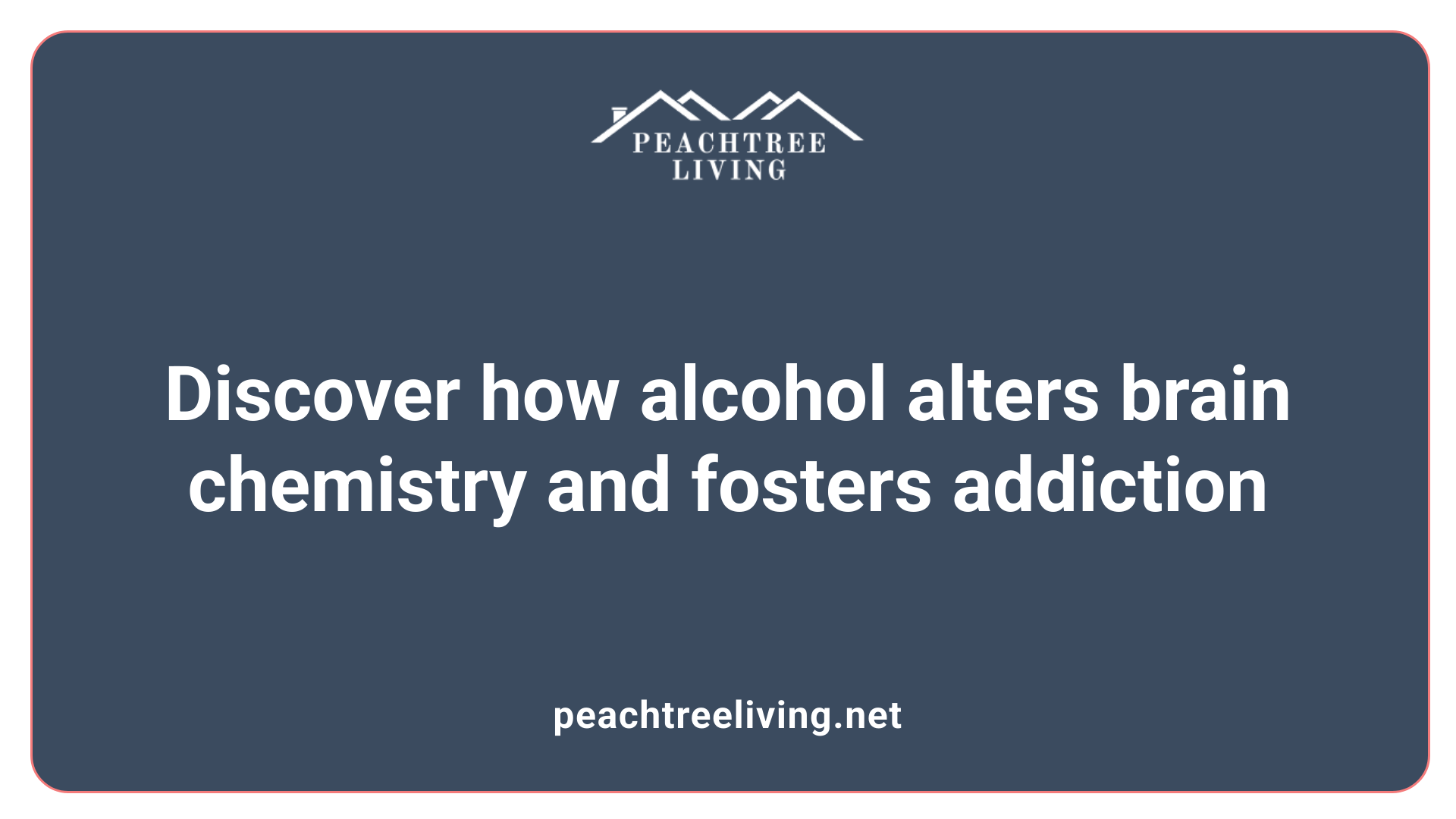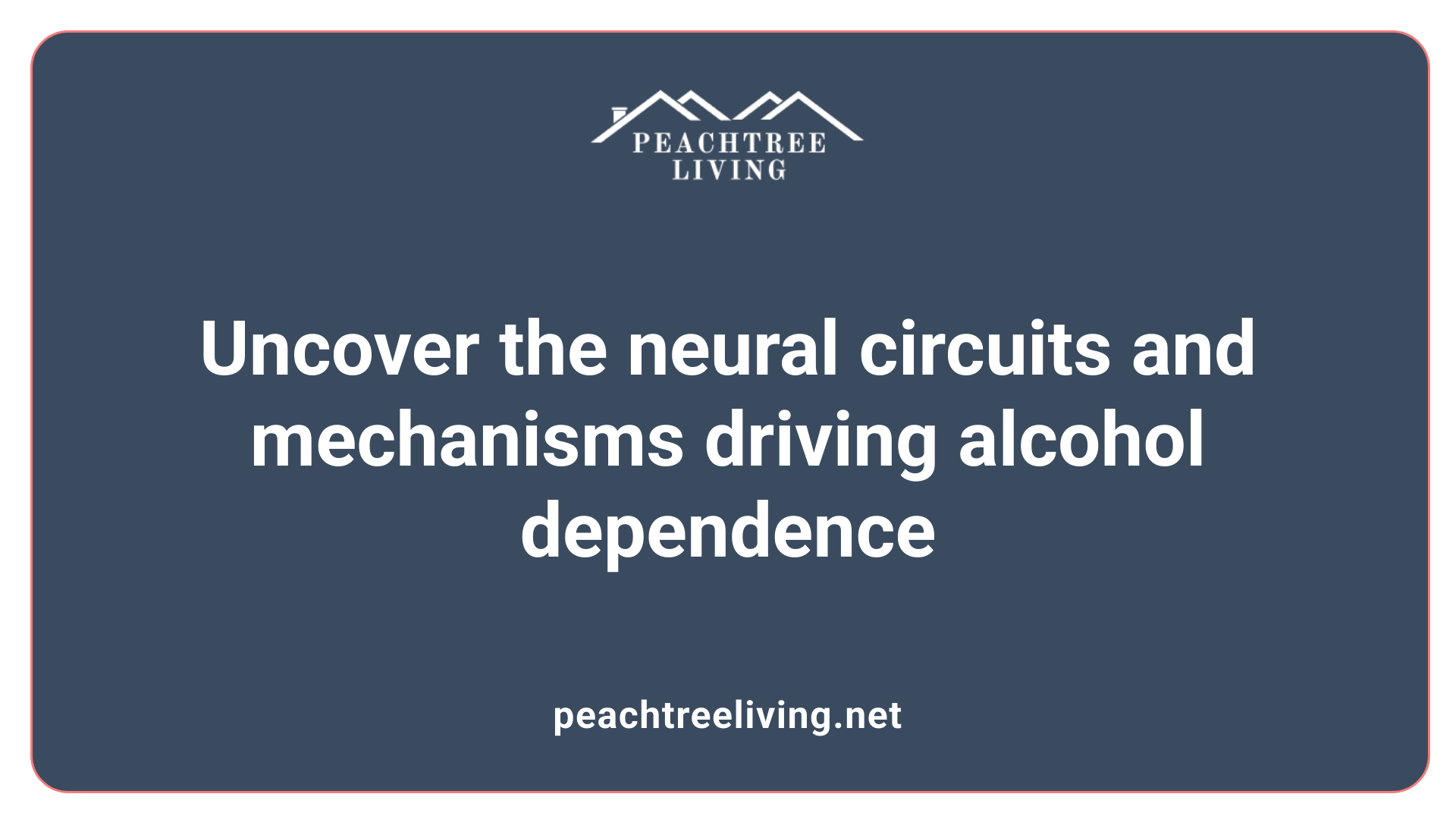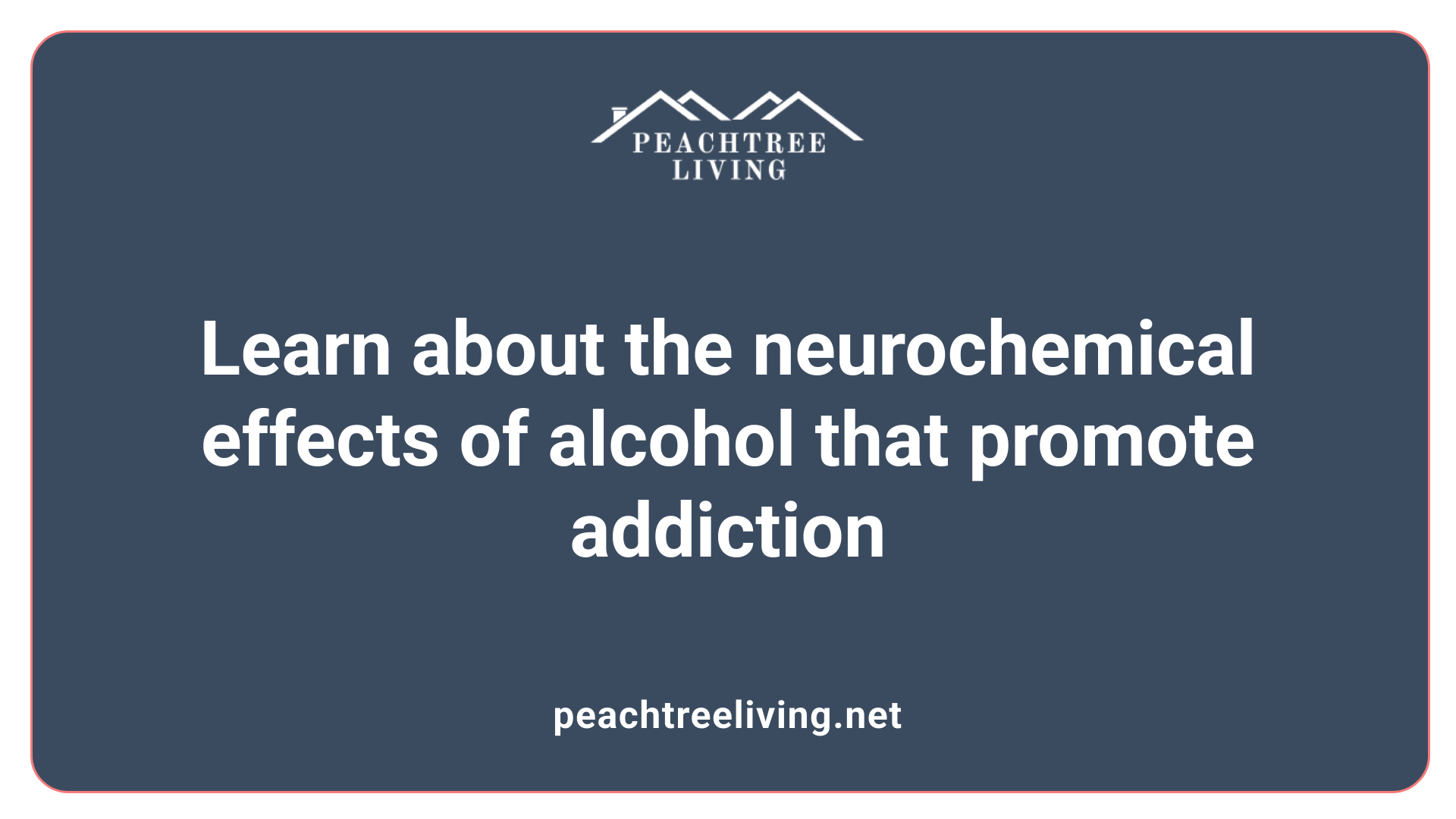Understanding the Science Behind Alcohol Addiction
Alcohol addiction, or alcohol use disorder (AUD), is a multifaceted condition that results from complex interactions within the brain, influenced by biological, psychological, and social factors. This article explores how alcohol affects brain chemistry, why it is highly addictive, the stages and signs of addiction, and the treatment options available. By understanding these mechanisms, we can better grasp why quitting alcohol can be so challenging and what measures can support recovery.
How Alcohol Affects the Brain and Body to Cause Addiction

How does alcohol affect the brain and body to cause addiction?
Alcohol impacts the brain and body primarily by activating the brain’s reward system. It stimulates the release of dopamine and endorphins, neurotransmitters responsible for feelings of pleasure and pain relief. This flood of chemicals reinforces drinking behavior, making it feel rewarding and enticing repeated use.
With ongoing alcohol consumption, the brain undergoes neuroadaptations—changes in the structure and function of neural circuits involved in reward, stress, and decision-making. Key brain areas affected include the basal ganglia, which are involved in habit formation, the extended amygdala linked to stress and negative emotions, and the prefrontal cortex responsible for impulse control and judgment.
These changes lead to increased tolerance, meaning more alcohol is needed to achieve the same effects. Over time, dependence develops, where the brain relies on alcohol to maintain normal functioning. During withdrawal, when alcohol consumption stops or decreases, the activity in reward pathways diminishes, leading to feelings of depression, anxiety, and physical symptoms such as sweating and tremors.
Simultaneously, stress systems in the brain become overactive, intensifying negative emotional states that push individuals toward further drinking to alleviate discomfort, creating a vicious cycle. This cycle involves bingeing, withdrawal symptoms, and intense cravings, which perpetuate addiction.
The development of alcohol dependence is also influenced by genetic, psychological, and environmental factors. Genetic predispositions can make certain individuals more sensitive to alcohol’s effects or less able to resist its influences. Psychological factors like stress, anxiety, or trauma may lead individuals to use alcohol as a coping mechanism. Environmental factors, including peer pressure and cultural norms, further increase the risk.
In essence, alcohol’s impact on brain chemistry and neural circuits causes both physical and psychological addiction. It alters the way the brain rewards itself, diminishes impulse control, and heightens stress responses, all of which contribute to the compulsive drinking seen in alcohol use disorder.
The Science Behind Alcohol's Addiction Potential

What is the science behind why alcohol is addictive?
Alcohol’s addictive nature stems from its powerful effects on the brain’s neurochemical systems. When consumed, alcohol instantly triggers the release of dopamine in reward centers such as the ventral tegmental area and nucleus accumbens. This surge in dopamine creates feelings of pleasure and euphoria, reinforcing drinking behavior. Simultaneously, alcohol influences gamma-aminobutyric acid (GABA), promoting feelings of calm and reducing anxiety.
However, with repeated heavy drinking, the brain undergoes neuroadaptations. These changes include a decreased response to natural rewards and an increased activity in stress-related regions like the extended amygdala. Such shifts diminish the brain’s ability to experience pleasure from ordinary activities and elevate negative emotional states during withdrawal, fueling a cycle of dependence.
The addiction process involves three primary neural circuits:
| Stage | Brain Regions Involved | Functions |
|---|---|---|
| Binge/Intoxication | Basal ganglia, ventral tegmental area | Reward processing & habit formation |
| Withdrawal/Negative Affect | Extended amygdala, stress systems | Negative emotional states, stress sensitization |
| Preoccupation/Anticipation | Prefrontal cortex | Craving, impulse control |
During the withdrawal period, diminished reward function combined with heightened activity in stress circuits leads to feelings of anxiety, irritability, and craving, compelling continued alcohol seeking.
Long-term, these neuroadaptations cause structural and functional brain changes. The prefrontal cortex, responsible for decision-making and impulse control, becomes impaired, making abstinence difficult. Although brain plasticity offers some recovery potential, persistent alterations can trap individuals into cycles of relapse.
In conclusion, alcohol’s addictive potential is rooted in its capacity to hijack the brain’s reward and stress systems, creating a cycle of dependence that is challenging to break without targeted interventions.
Chemical Components in Alcohol That Foster Dependence

What is in alcohol that makes it so addictive?
Alcohol’s ability to cause dependence is primarily linked to its impact on the brain’s chemistry, especially in the reward system. Once consumed, alcohol stimulates the release of neurotransmitters like dopamine and endorphins. These chemicals create feelings of pleasure, relaxation, and pain relief, reinforcing the act of drinking. Over time, the brain starts to rely on alcohol to activate this reward pathway, leading to cravings and compulsive drinking behavior.
In addition to its effects on reward chemicals, alcohol impairs the communication between different brain regions responsible for judgment, decision-making, and memory. It affects the function of the prefrontal cortex, which is crucial for impulse control, making it harder for individuals to resist the urge to drink.
Chronic alcohol use causes structural and functional damage in the brain. This damage can impair cognitive functions such as thinking, planning, and emotional regulation, which contributes to dependence. Prolonged exposure to alcohol alters neurotransmitter systems, resulting in tolerance — the need to consume more alcohol to achieve the same effects — and withdrawal symptoms when not drinking.
Moreover, alcohol influences the endocrine, nervous, and immune systems, contributing to physical dependency. The physiological changes include the brain adapting to frequent alcohol exposure, which can lead to neurochemical imbalances and damage.
Overall, the combination of pleasurable reinforcement, impaired brain communication, structural damage, and physiological adaptations makes alcohol highly addictive. Its ability to hijack the brain’s reward pathways and cause widespread brain and body effects explains why alcohol dependence develops so readily and is difficult to overcome without help.
Psychological Motivations for Alcohol Consumption
What are the psychological reasons for drinking alcohol?
People often turn to alcohol for various psychological reasons. One of the primary motives is mood enhancement—drinking in search of relaxation, euphoria, or increased confidence. Many use alcohol as a way to temporarily escape or numb feelings of stress, boredom, anxiety, or depression.
Self-medication is a common behavior where alcohol is used to manage mental health problems like anxiety, emotional distress, or low mood. While it might provide short-term relief, this pattern can lead to increased reliance on alcohol, and over time, dependency or addiction.
Personality traits also play a role. Traits such as impulsiveness, low self-esteem, or a strong desire for social acceptance can drive individuals to consume alcohol more frequently. It can serve as a social lubricant, helping people feel more comfortable in social interactions.
Drinking can reinforce negative feelings, creating a cycle where alcohol temporarily alleviates discomfort but ultimately worsens underlying emotional problems. This cycle of dependence is often exacerbated by social pressures, familial influences, or genetic predispositions that make alcohol a preferred maladaptive coping method.
In summary, psychological motivations for drinking include seeking positive emotional states, self-medicating mental health issues, and responding to personal and social vulnerabilities, all of which can contribute to the development of alcohol dependence.
Causes and Risk Factors for Developing Alcohol Dependence
What are the causes and risk factors for developing alcohol dependence?
The development of alcohol dependence, also known as alcohol use disorder, is influenced by an array of interconnected factors. One significant element is genetic predisposition. Individuals with a family history of alcoholism are at higher risk, as specific genetic variants can affect how alcohol is metabolized and how the brain responds to alcohol's effects.
Psychological factors also play a crucial role. Conditions such as depression, anxiety, post-traumatic stress disorder (PTSD), and impulsivity can increase vulnerability. People often turn to alcohol as a way to cope with emotional distress, which may reinforce habitual drinking and lead to dependence.
Environmental and social influences further contribute to risk levels. Early exposure to alcohol, especially during adolescence, can make the brain more receptive to its effects. Peer pressure, societal norms that normalize or even encourage heavy drinking, and the easy availability of alcohol are important factors. Stressful environments or high-pressure professions may also boost the likelihood of turning to alcohol for escape or relief.
Neurological changes resulting from prolonged alcohol consumption, such as alterations in brain chemistry and structure, further reinforce dependence. These changes can impair judgment, decrease impulse control, and increase cravings, making continued use more compelling.
In summary, multiple elements—genetics, mental health, early drinking, social environment, and brain changes—interact intricately to influence an individual's risk of developing alcohol dependence. Recognizing these risk factors can aid in prevention, early intervention, and tailored treatment strategies.
Physical and Mental Addiction: An Intertwined Disease
Is alcohol physically or mentally addictive?
Alcohol addiction is a complex condition that involves both physical and mental dependence.
Physical dependence occurs when the body adapts to regular alcohol consumption, leading to physiological changes. When an individual stops drinking, they may experience withdrawal symptoms such as tremors, sweating, nausea, and in severe cases, seizures and hallucinations. These symptoms happen because the body has become accustomed to alcohol's presence and struggles to restore its normal functioning without it. Medical detoxification is often necessary to manage these symptoms safely.
Mental or psychological addiction refers to a deep-seated emotional and cognitive reliance on alcohol. It manifests as intense cravings, obsessive thoughts about drinking, and using alcohol as a primary way to cope with stress, anxiety, or depression. People often believe they need alcohol to function or feel normal, which reinforces their desire to continue drinking.
Often, physical and psychological dependencies develop simultaneously, creating a cycle that makes quitting challenging. Physical symptoms motivate avoidance of withdrawal by maintaining alcohol use, while emotional reliance sustains compulsive drinking despite awareness of negative effects.
Understanding both aspects of alcohol addiction is critical for effective treatment. Therapy, medication, and support groups aim to address these intertwined dependencies, helping individuals achieve lasting recovery.
Recognizing Signs, Symptoms, and Treatment of Alcohol Use Disorder
What are the stages, signs, symptoms, and diagnosis of alcohol use disorder?
Alcohol use disorder (AUD) is a chronic condition characterized by an inability to control alcohol consumption despite negative consequences. According to DSM-5-TR, diagnosis requires meeting at least two of eleven specific criteria within a year. These criteria include drinking larger amounts or longer than intended, unsuccessful efforts to reduce intake, craving, neglect of responsibilities, continued use even when it causes problems, developing tolerance, and experiencing withdrawal symptoms such as sweating, tremors, or nausea.
The severity of AUD is categorized into three levels based on the number of criteria met: mild (2-3 symptoms), moderate (4-5 symptoms), or severe (6 or more symptoms). Signs often include strong urges or cravings, loss of control over drinking, tolerance requiring more alcohol to achieve the same effect, and withdrawal symptoms if drinking stops abruptly.
Diagnosis involves a comprehensive clinical assessment that includes interviews, physical checks, and psychological evaluations. Unlike some conditions, there is no single lab test to confirm AUD; instead, diagnosis relies on reported behaviors and health evaluations. Early identification of these signs and symptoms can facilitate intervention, preventing further health deterioration.
Understanding these stages and indicators helps individuals and healthcare providers recognize the problem early, paving the way for effective treatment and support.
Moving Forward with Awareness and Support
Understanding how alcohol affects the brain and body to foster addiction emphasizes the importance of early intervention, education, and support systems. Recognizing the signs and symptoms of alcohol use disorder enables timely treatment, which can include behavioral therapy, medications, and support groups. Long-term recovery is possible through comprehensive approaches that address both the physiological and psychological components of addiction. Awareness of the biological and social factors fueling alcohol dependence can help individuals and communities develop effective prevention and treatment strategies, ultimately reducing the health and social burdens associated with alcohol addiction.
References
- The Cycle of Alcohol Addiction
- Why Is Alcohol So Addictive? - Caron Treatment Centers
- Alcohol use disorder - Symptoms and causes - Mayo Clinic
- What Makes Alcohol Addictive? - Recovery Centers of America
- How Addictive Is Alcohol? Why It's So Easy to Become Dependent
- Alcohol Use Disorder: What It Is, Symptoms & Treatment
- Alcoholism - Wikipedia

